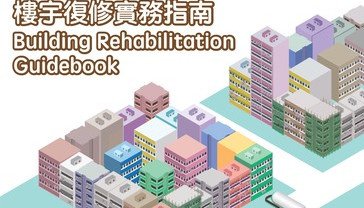Why building inspection?
Understanding the current condition of the subject building is the initial step to a good gauging of existing issues, which contributes to a systematic planning and implementation of building rehabilitation works.
Purposes:
• To understand the current condition and extent of dilapidation of the building;
• To identify the reasons of dilapidation and hence, their suitable remedial solutions;
• To assess the scope of works, prepare cost estimate, prioritise works items and draft works schedule; and
• To determine the content and quantity of the works items for the preparation of relevant tender documents and cost estimate.
• To identify the reasons of dilapidation and hence, their suitable remedial solutions;
• To assess the scope of works, prepare cost estimate, prioritise works items and draft works schedule; and
• To determine the content and quantity of the works items for the preparation of relevant tender documents and cost estimate.
Scope of inspection
• Review of information relevant to building maintenance;
• Review of statutory orders issued by government departments to clarify relevant statutory requirements;
• Comparative review of occupation permits, floor plans and other relevant documentation against the actual existing layout of the building;
• Review of provisions pertaining to building maintenance in the DMC of the building;
• Questionnaire survey on opinions of residents on the building condition (if applicable).
• Review of statutory orders issued by government departments to clarify relevant statutory requirements;
• Comparative review of occupation permits, floor plans and other relevant documentation against the actual existing layout of the building;
• Review of provisions pertaining to building maintenance in the DMC of the building;
• Questionnaire survey on opinions of residents on the building condition (if applicable).
Site Inspection
• Thorough inspection including building components, public equipment and facilities at common areas of the subject building;
• Thorough assessment of building condition based on the information collected to identify existing defects, dilapidations, potential issues, as well as
• Thorough assessment of building condition based on the information collected to identify existing defects, dilapidations, potential issues, as well as
any situations contravene to regulations and ordinances in force;
• Detailed analysis of the current condition and issues of the building, with reasons of and solutions for each issue clearly stated;
• Detailed report on the general scope of damages of the building, their remedial solutions and suitable materials and methods of works for the
• Detailed analysis of the current condition and issues of the building, with reasons of and solutions for each issue clearly stated;
• Detailed report on the general scope of damages of the building, their remedial solutions and suitable materials and methods of works for the
owners/OCs’ review;
• Categorisation of works items into ‘Mandatory’ or ‘Recommended’ group in accordance with their urgency and prioritisation of works items listed in
• Categorisation of works items into ‘Mandatory’ or ‘Recommended’ group in accordance with their urgency and prioritisation of works items listed in
each category;
• Verification and signing of the inspection report and rehabilitation proposal by prescribed building professional (e.g. Authorised Person/registered
• Verification and signing of the inspection report and rehabilitation proposal by prescribed building professional (e.g. Authorised Person/registered
inspector).
Methods of inspection
Common building inspection methods include:
• Visual observation/visual inspection;
• Infrared thermography (suggested to be used as reference for preliminary rehabilitation cost estimates);
• Hammer tapping;
• Other non-destructive approaches, for example:
- Covermeter survey;
- Crack width measurement;
- Rebound hammer test.
• Visual observation/visual inspection;
• Infrared thermography (suggested to be used as reference for preliminary rehabilitation cost estimates);
• Hammer tapping;
• Other non-destructive approaches, for example:
- Covermeter survey;
- Crack width measurement;
- Rebound hammer test.
Owners/OCs should discuss with their works consultant on details of the above methods or other feasible methods suggested by professionals.
Want to learn more?


















